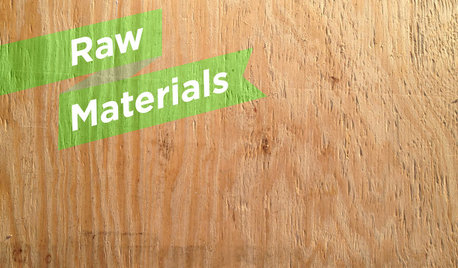Urea- ok for a 'quick greenup'?
shuber
16 years ago
Related Stories

REMODELING GUIDESCool Your House (and Costs) With the Right Insulation
Insulation offers one of the best paybacks on your investment in your house. Here are some types to discuss with your contractor
Full Story
GREEN DECORATINGBamboo Products — Earth Friend or Foe?
The ecofriendliness of this grass for flooring, wall coverings and furniture isn't cut and dried. Get the facts here
Full Story
GARDENING GUIDESGarden Myths to Debunk as You Dig This Fall and Rest Over Winter
Termites hate wood mulch, don’t amend soil for trees, avoid gravel in planters — and more nuggets of garden wisdom
Full Story
HEALTHY HOMEDetox Your Kitchen for the Healthiest Cooking
Maybe you buy organic or even grow your own. But if your kitchen is toxic, you're only halfway to healthy
Full Story
MOST POPULARHow to Get the Closet of Your Dreams
Do you cringe every time you open your closet door? It may be time for a makeover
Full Story
GREEN BUILDINGWhat's LEED All About, Anyway?
If you're looking for a sustainable, energy-efficient home, look into LEED certification. Learn about the program and its rating system here
Full Story
CONTRACTOR TIPSBuilding Permits: What to Know About Green Building and Energy Codes
In Part 4 of our series examining the residential permit process, we review typical green building and energy code requirements
Full Story
GREEN BUILDINGHouzz Tour: Going Completely Off the Grid in Nova Scotia
Powered by sunshine and built with salvaged materials, this Canadian home is an experiment for green building practices
Full Story
WOODThe Power of Plywood All Around the House
Of course you've heard of it, but you might not know all the uses and benefits of this workhorse building material
Full Story





fescue_planter
shuberOriginal Author
Related Professionals
Forest Park Landscape Architects & Landscape Designers · Lowell Landscape Architects & Landscape Designers · Panama City Landscape Architects & Landscape Designers · Aurora Landscape Contractors · Belvedere Park Landscape Contractors · Downey Landscape Contractors · Kaysville Landscape Contractors · Lees Summit Landscape Contractors · Norristown Landscape Contractors · Quincy Landscape Contractors · Spring Landscape Contractors · York Landscape Contractors · Gages Lake Driveway Installation & Maintenance · Haltom City Swimming Pool Builders · Annapolis Fence Contractorsbpgreen
greenjeans_il
shazam_z3
lou_spicewood_tx
greenjeans_il
shuberOriginal Author
greenjeans_il
shuberOriginal Author
deerslayer
bpgreen
deerslayer
deerslayer
greenjeans_il
deerslayer
deerslayer
greenjeans_il
deerslayer
deerslayer
deerslayer
woodycrest
deerslayer
shuberOriginal Author
bpgreen